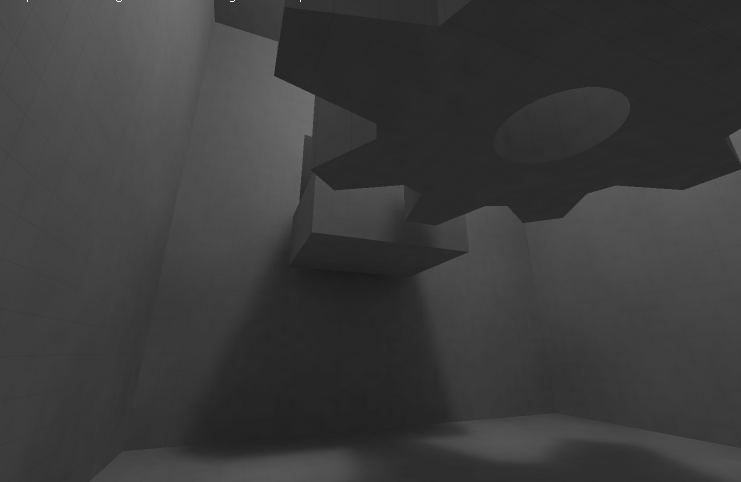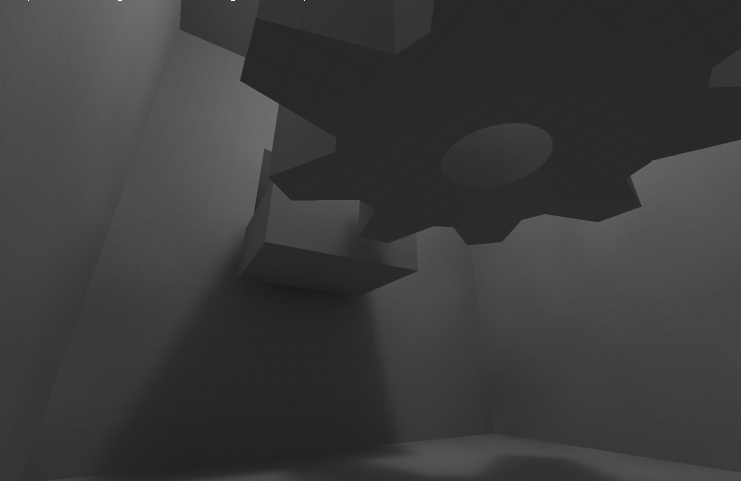When 8 bits is not enough for lightmaps
[back]
The problem: lightmaps typically cover many pixels on screen and...
rounding shows ugly banding:

dithering lightmaps shows visible noise:

my solution: rgb palette (1-bit per channel table) has minor hue artifacts in dark areas but banding completely disappears:

How it works
-
It's actually quite simple, the lightmapper generates 32-bit floats so I have enough information.
Lightmaps are stored in gamma space to handle dark areas better (=pow(color, 1/2.2))
Instead of rounding final texels, I truncate them first and take average fraction for each channel:
obviously frac = value - trunc(value)
then I simply add gbrTable[intFrac = trunc(avgfrac*tableSize)] to final color, assuming already truncated and in 0..255 range
The table is actually straightforward to generate, in fact it can be extracted directly from quantized avg fraction:
(assuming table size is 8)
blue += intFrac & 1;
red += (intFrac & 2) >> 1;
green += (intFrac & 4) >> 2;
Channel ordering (b,r,g) is deliberate and correlates with perceptive luminance (blue 11%, red 30%, green 59%)
We effectively enhance the 8-bit precision by utilizing individual channels to store quantized fraction ("=error after truncation")
as 1-bit additive rgb color.
Maybe this is a known technique and it may even have a name, but "reinventing the WHEEL" can be fun.


